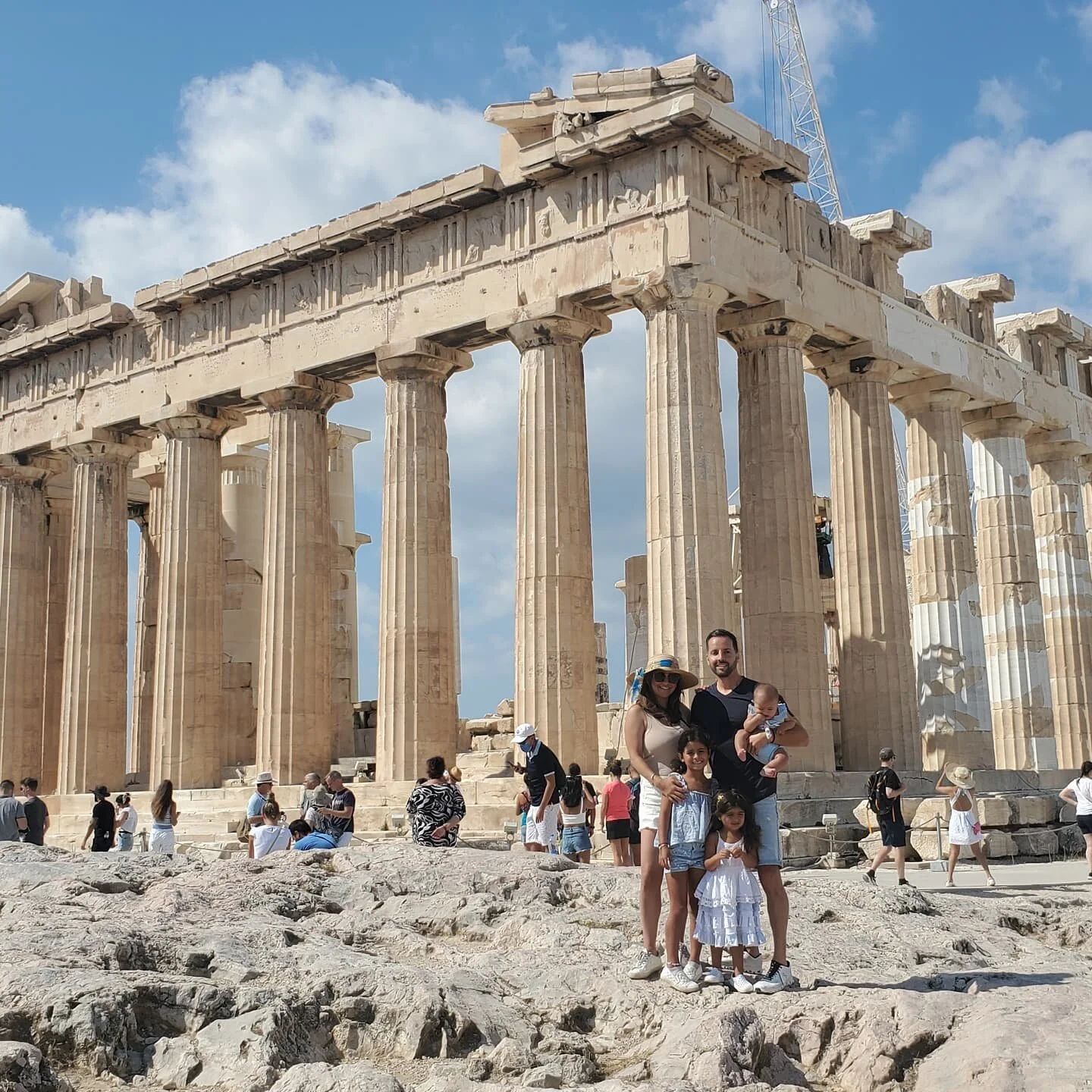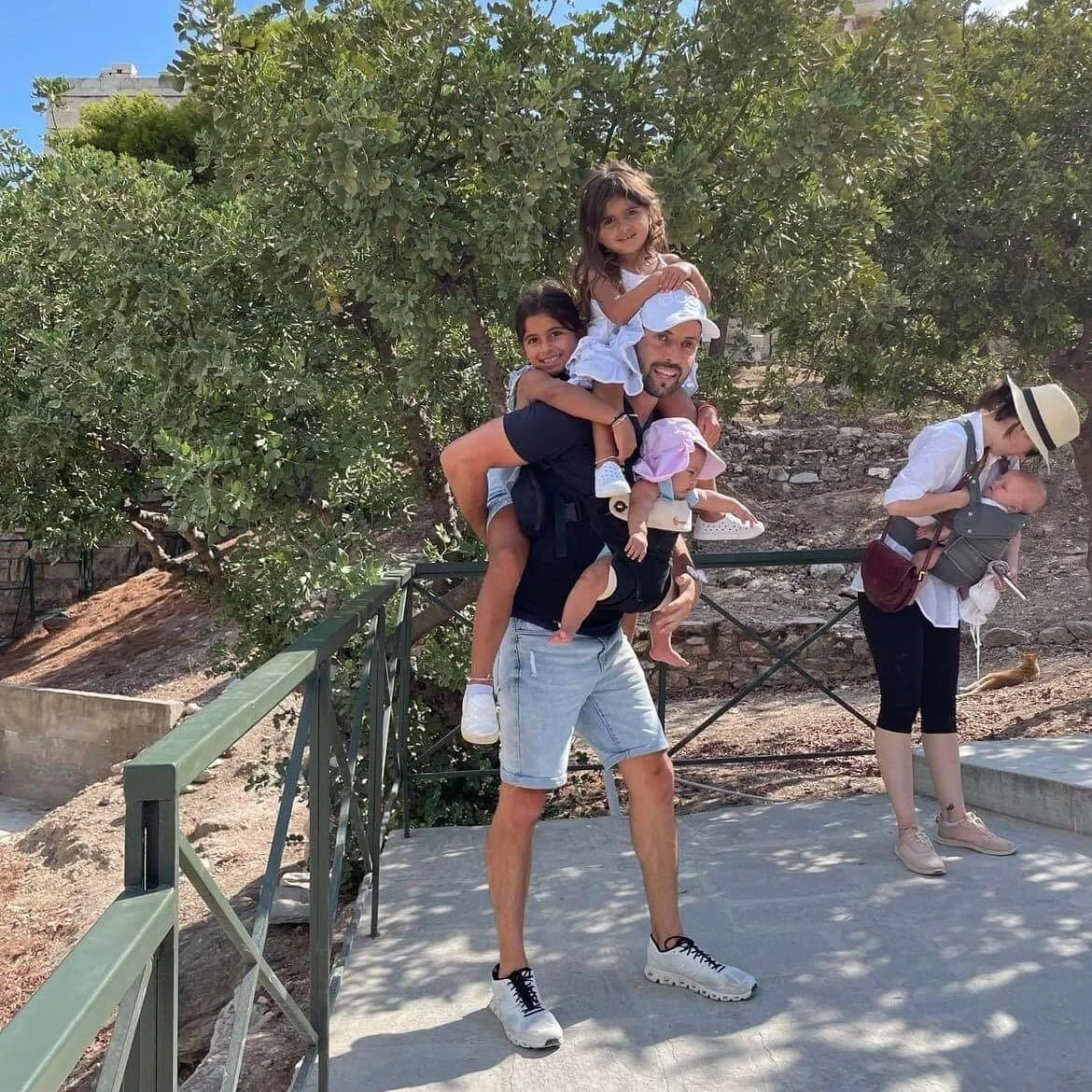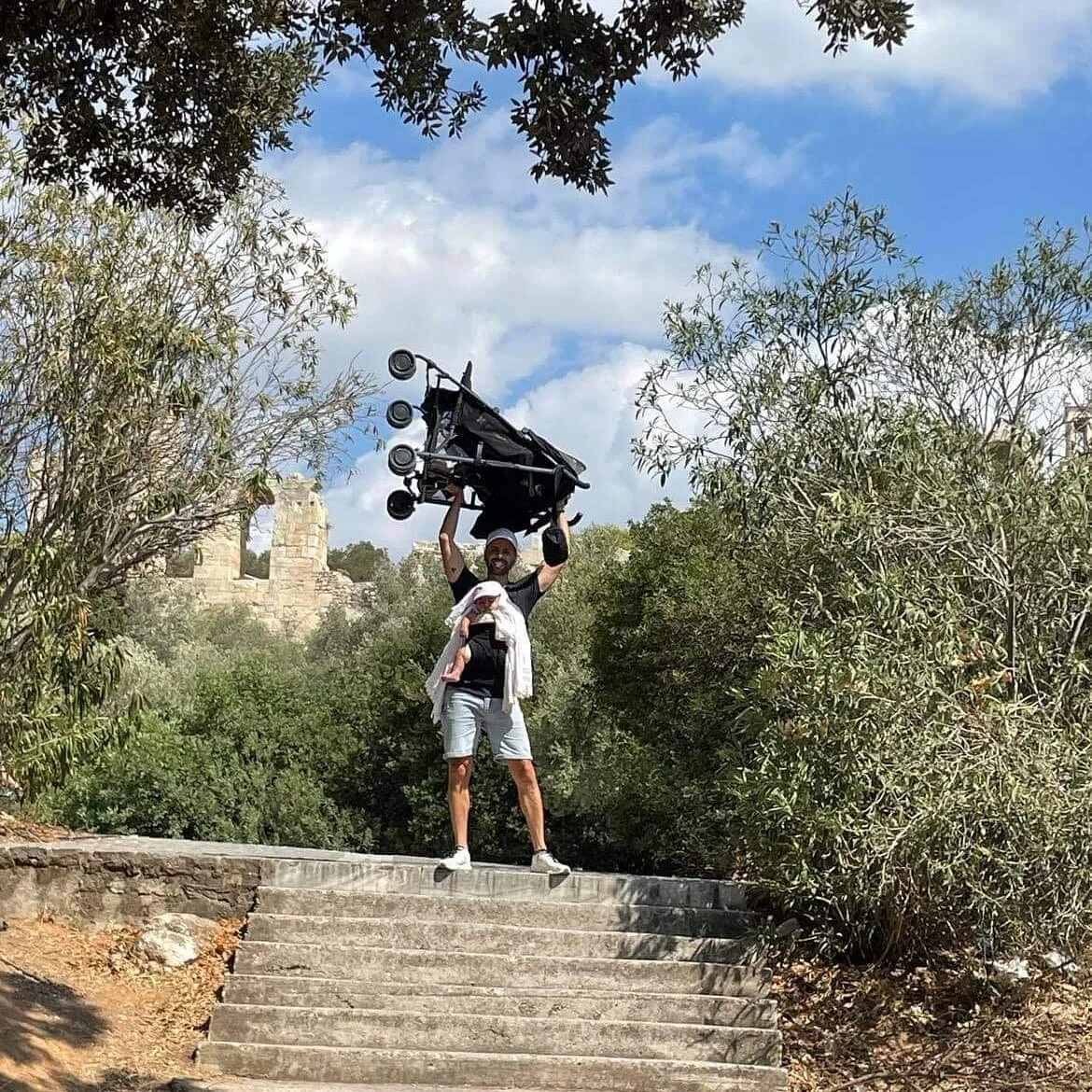CULTURAL TRADITION VIA THE ACROPOLIS PILGRIMAGE FOR MY 3 DAUGHTERS
September 1, 2021 with my three daughters and wife in front of the Parthenon at the Acropolis.
“I have three daughters and they each visited the Acropolis for the first time when they were just 5 months old. Very proud of this tradition I started for my family.”
Dimitra, Viviana and Evangelia STROUMBOULIS
For the last 21 years of my life, I have been to Greece at least once every year (and twice in the recent years for work). The only lapse in this record was the Covid year of 2020… boo! From a young boy, my immigrant parents sent my sister and I to Greece every summer from Canada. Staying connected and grounded with our Greek roots. Nothing better that that!
Now as a family man myself with the Greek roots embedded within, I am making it a point to do the same with my three daughters: Dimitra, Viviana and Evangelia. And what is more Greek than the symbol of the nation, the ancient and prestigious Acropolis in the heart of Athens.
My oldest was born in 2015. September of 2015, we took her to Greece for the first time when she was just 5 months old. At this point I started the tradition of taking her up there and downloading the essence of Greece, being Greek and what this represents. Fast forward three years later to 2018, my second daughter was born. And in September of 2018, at just 5 months old, we took her and her three-year-old sister to the Acropolis. One on my head and the other strapped to my chest, the entire way up AND down. Fast forward another 3 years later to 2021, my 5-month-old baby was taken up to the Acropolis for the first time in September 2021. Along with her 3-year-old sister and her 6-year-old sister. All attached to me going up.
They now share this tradition. Although it may not seem important to them at this time, having to climb a very steep mountain in the sweltering heat to see some old rocks and monuments, I know they will appreciate this in the future. The same way I appreciate it and thank both my parents for doing the same by instilling the Greek culture into both my sister and I from a young age.
My oldest, Dimitra, has now been to the Acropolis a total of 3 times by the age of 6. And this last visit was so special. Asking so many questions, wanting to take photos and looking around from the top. While the middle child was freaking out to go down and the youngest just strapped along for the ride.
I will continue to make this a tradition for my family. Taking the time to make this happen. Also, I have become an expert at this entire process, knowing where to illegally park at the foot of the Acropolis to make this a more efficient process, what time of day to go and how to climb up and down quickly to avoid meltdowns (wife included).
On this last trip, we also experienced the newly paved walkway around the Parthenon. Removing the slippery marble rocks that have caused endless slips and breaks for tourist over the last decades. I was not a fan on the outside, but deep down, it did help me have better grip for the three humans strapped to my body.
Whatever your culture, whatever the monument, whatever the meaning, it is truly important to instill traditions. This is why I make it a point to do this every year we visit Greece. Sure, the easy response is “they are too young to take them up there and it is too much of a process for us to handle”. But we should be appreciating our history more than the foreign tourists that flock there annually.
As for a potential 4th child and taking them up at 5 months old to the top of the Acropolis, I need to instill some constraint in that department and pump the brakes on any future offspring.
Ρίζες. Οικογένεια. Ελλάδα.
Climbing the Acropolis with my three daughters strapped to me. All the Way up!
So proud to be up here with my girls, as for Evangelia, not so much.
At the base of the Acropolis with the double stroller and my youngest on my chest.
MORE ABOUT THE PARTHENON AT THE ACROPOLIS
The Parthenon, located on the Acropolis in Athens, Greece, holds significant cultural, historical, and architectural importance. Here are some key reasons why the Parthenon is revered:
Symbol of Ancient Greek Civilization: The Parthenon is an enduring symbol of ancient Greek civilization and the apex of classical Greek art and architecture. It represents the pinnacle of artistic achievement during the Golden Age of Athens in the 5th century BCE.
Dedication to Athena: The Parthenon was originally built as a temple dedicated to the goddess Athena, the patron deity of Athens. It served as the focal point of religious worship and played a central role in the city's religious and cultural life.
Architectural Mastery: The Parthenon showcases the mastery of Greek architects, including Iktinos and Kallikrates, and the craftsmanship of sculptor Phidias. It exemplifies the principles of Classical Greek architecture, characterized by balance, harmony, and mathematical precision.
Historical Significance: The Parthenon witnessed and survived centuries of historical events, including the rise and fall of empires, wars, and invasions. Its enduring presence serves as a reminder of Greece's rich history and the legacy of ancient Greek civilization.
Cultural and Artistic Influence: The Parthenon has had a profound impact on Western art, architecture, and culture. Its architectural elements, such as the use of the Doric order, have influenced subsequent generations of architects and continue to inspire artists worldwide.
Preservation of Sculptural Treasures: The Parthenon once housed an array of magnificent sculptures, including the renowned frieze depicting the Panathenaic procession. Although many of these sculptures have been lost or damaged, their preservation and study have contributed to our understanding of ancient Greek art.
UNESCO World Heritage Site: The Parthenon, along with the other structures on the Acropolis, is recognized as a UNESCO World Heritage Site. Its inclusion underscores its universal value, significance, and need for protection and preservation.
Tourist Attraction: The Parthenon attracts millions of visitors each year who come to admire its architectural grandeur, learn about ancient Greek history, and appreciate its cultural and artistic legacy. It serves as a major cultural and educational landmark in Greece.
Overall, the Parthenon holds immense cultural, historical, and architectural importance. It stands as a testament to the achievements of ancient Greece, the enduring legacy of classical art and architecture, and the global significance of Greek civilization.



























